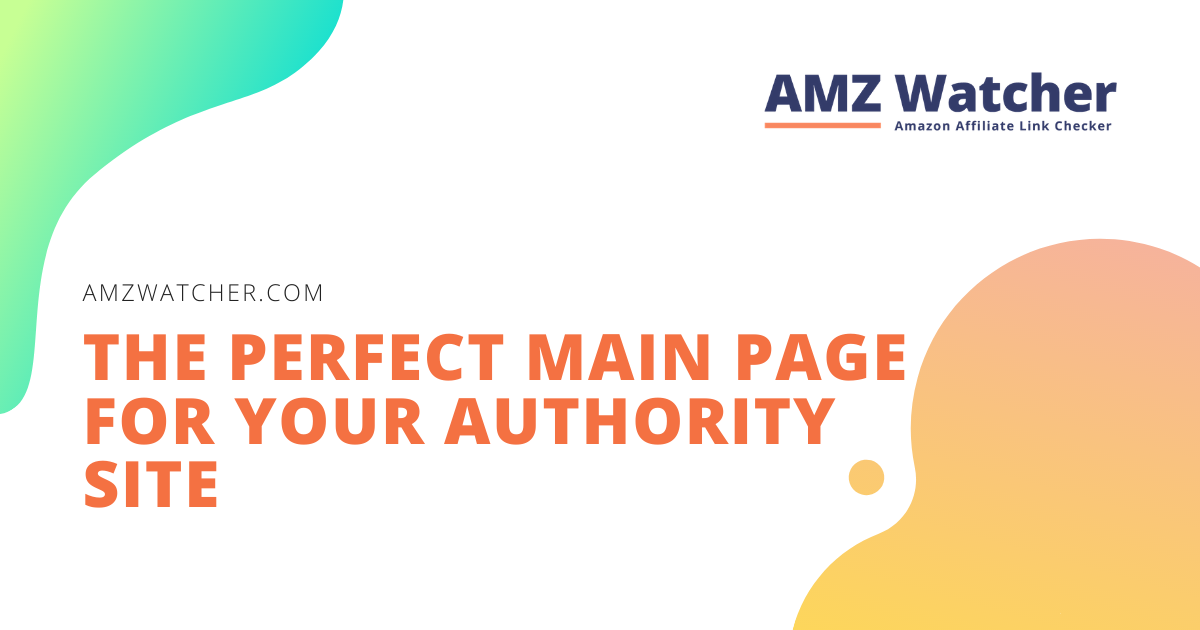Contents
What are your important tasks as an authority site operator?
1. Increase your website’s visitor count
A slight change in your authority site’s visitor count can greatly affect your website’s performance. If you’ve been noticing a constant downward trend, you’ll have to quickly identify what elements of your pages turn visitors off. Otherwise, expect your revenue streams to go bonkers too!
Your job is to put in a reasonable amount of time and effort to optimize your authority site’s visibility. Revisit your long term SEO strategy, and make it an ongoing commitment to increase your traffic.
2. Earn higher commissions
All of your invested hours and money into an authority site will be for nothing if you fail to monetize it. If offering your own products or services is out of the question, scout for affiliate programs with reliable commission models and reasonable cookies runtime.
My personal trick is to focus on more expensive products. Even though they have comparatively low sales volume, referral bonuses are often enticing! I’m also picky with the affiliate programs I join, making sure that the online shop I recommend is trustworthy and that the effort of marketing their products will be well-compensated.
3. Improve conversion rates
Sure, your website successfully landed on Google’s results page. But how big is your slice of each keyword’s traffic? And even if you do get visitors, how often do they click on that buy now button? Monitor your click-through and conversion rates as much as you check your bank account for encashed bonuses. Your high commission rates and quality content are good as nothing if you don’t sell a single product in the end.
All of these essential tasks are affected by one strategy that webmasters often take for granted – ad management and optimization. Bombarding your page with annoyingly persistent pop-up ads is a big invitation to click on the close button. The amount of commissions you get and the conversion rates recorded for your authority site is also dependent on how you design advertisements and where you place them.
What are the common errors you should avoid when managing your ads?
Every webmaster’s goal must be to provide value for visitors. Reality check – any form of advertisement can potentially turn your visitors off. They’re smart enough to distinguish a greedy money page from a credible buyer guide. Your job? Treat readers’ attention and interest span as a delicate treasure that you have to balance with your call-to-action elements.
Watch out for these red flags and make sure you’re not doing any of them when managing your ads:
- Excessive ad banners and buttons on a single page
- Highly distracting ads that make it impossible to focus on your content
- Displaying ads that are irrelevant to a page’s topic
- Embedding ads that are not optimized for mobile display
- Nonresponsive product tables or call-to-action buttons
How should you manage and optimize your ads then?
The equation for success is pretty simple: delivering the right ads to the right users at the right time = high click-through rates. Ads shouldn’t disrupt a reader’s attention, but rather cultivate it instead. Do not concentrate all of your quality control strategies on your blog articles. Even displayed pop-up ads must provide value!
Let me share a quick case study involving one of my travel niche sites. Previously, my visitors were constantly annoyed by thematically inappropriate pop-ups. How wrong of me to assume that if I make my ads as persistent as possible, they’d probably interested in availing my offered tours. I didn’t even consider the types of packages advertised for each blog post.
Obviously, I barely made any sales. Thank God I came to my senses and planned for these major changes:
- I optimized my pop-ups’ value by matching the time and location of its offered excursions with the content of each article.
- I placed my advertisements in strategic parts of my page that did not compromise my visitor’s natural flow of reading
- I tested different ad designs and layouts to determine which one has the highest click-through rate
The results were pretty impressive. While my revenue stream on that site was previously dependent on a pitiful 4.5% ads click rate, that stat skyrocketed to over 30%!
What WordPress plugins can help you manage and optimize ads?
The principle behind ad management and optimization may seem pretty simple, but it’s easier said than done. Webmasters with limited technical skills may even find it a nightmare! Thankfully, you don’t have to suffer from doing things manually. Allow me to introduce you to my best buddy in implementing strategic call-to-actions – the Advanced Ads plugin.
Don’t worry, you don’t have to imagine every possible buyer persona and all types of interactions they might have with your authority site by yourself. You also need not have jaw-dropping skills in coding! Advanced Ads can take a lot of that load off your back with these functions:
- Automated targeting of ads according to content and page visitors. You can tweak your call-to-actions with certain categories and tags to make sure the best ad is displayed for the right reader.
- Integration of ad widgets via shortcode. Fully compatible with the leading WordPress plugins for designing ads.
- Reports generation with Google Analytics. Monitor your click rates with user-friendly statistics and trends you can use as a guide to further optimize your ads. (Google Analytics is great for collecting information about website visitors. But analyzing and processing the data he collected is not as easy as we would like.
Integration of Google Analytics with CRM or Google sheets will allow you to see everything at once: both the channel from which each lead came, and his personal history of transactions with all requests, purchases, refusals, and so on.
This can be done either manually, which requires a lot of time and money, or with an application connector like ApiX-Drive). - Cancellation of the “noreferrer” and “noopener” link attributes. You’re not the only one who got fed up by how WordPress version 4.7.4 automatic addition of the “noreferrer” and “noopener” attributes to text links. This often interferes with the tracking process for your affiliate URLs. With Advanced Ads, you no longer have to worry about unfairly losing commissions.
As if these free basic features are not impressive enough, you can also access more advanced functions by subscribing to Advanced Ads’ Pro Version. For an annual subscription of approximately $43, you’ll enjoy the following upgrades:
- Additional placement settings for embedding your ads into your content
- Additional display and visitor conditions (e.g. user role, page impressions, cookies, browser language, etc.)
- Ad-blocker resistant widgets
- Administrative set up page for designating roles to your ad management team
- Advanced ad optimization features (e.g. increased loading speed, click fraud protection, ad frequency limits, etc.)
To generate professional-looking ads, count on these WordPress plugins that are popular among authority site operators:
- Amazon Affiliate WordPress plugin
- Affiliate Toolkit
- Amazon Associates Link Builder
- Amazon Simple Affiliate
All these tools can help you design product widgets, comparison tables, and bestseller lists which can easily be integrated into your content using shortcodes. Even better, they’re absolutely compatible with Advanced Ads so you don’t have to worry about sabotaging your page display. With this combination, you get the best out of aesthetic, relevant, and strategically placed ads.
How do you manage and optimize your ads on authority sites? Share your favorite plugins and best practices with us in the comment section!




